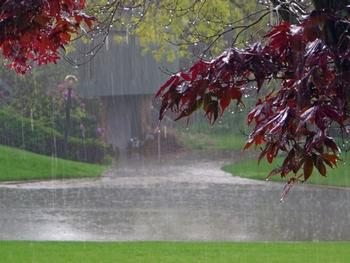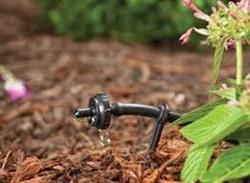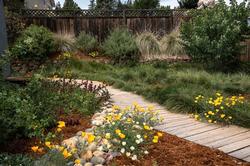Winter 2023-24
Water in winter: what to do about it, how to think about it

Photo: chrismetcalftv
The good news? There are numerous strategies (and plants!) to help you save and manage water while also having a beautiful and satisfying landscape. We naturally think about these strategies in summer when temperatures spike and drought looms. But winter offers the gardener time for some water-conservation planning and observation. Here’s what to do during those chilly winter months when rain is – or isn’t – in the forecast.
 Generally speaking, drip irrigation is the most water-efficient system. Photo: UCANR
What to do about water in winter
Generally speaking, drip irrigation is the most water-efficient system. Photo: UCANR
What to do about water in winter

Generally speaking, drip irrigation is the most water-efficient system. Photo: UCANR
- Turn off your irrigation system – sprinklers, drip, everything.
- Fix leaks or make adjustments as needed to your irrigation system. Best to correct issues now so your system is ready for action come spring and summer.
- Put down a layer of mulch. In addition to many other benefits, it will help your soil retain whatever rain falls. It also will help reduce the impact of heavy rainfall and the subsequent soil erosion that can occur.
- Determine if you’re watering too much or too little during the year. Inappropriate irrigation is among the most common cause of plant problems. Too little or too much water can adversely affect the appearance, development, and growth of plants.
- Consider rain water retention strategies that help rain water slow, sink, and spread deep into soil. If there’s a new patio or path in your future, perhaps this is a good time to consider an attractive permeable surface that would allow water to sink in rather than slosh into rain gutters and out into the Bay. This will not only help you save water, it will also help to recharge our critical groundwater and keep our watersheds
- See what’s blooming at the nursery, as there are some beautiful winter bloomers. Here are a few California native plants that shine in winter and do not require much if any water once established: manzanita (Arctostaphylos), coast silk tassel (Garrya elliptica), currant (Ribes), and lemonade berry (Rhus integrifolia).
- Schedule a Garden Walk. Two Marin Master Gardeners will visit your garden to help you create a water-wise, sustainable, healthier garden.
 California native gardens are naturally adapted to our conditions and provide many other benefits. Photo: Vicki Anderson
When to water in winter
California native gardens are naturally adapted to our conditions and provide many other benefits. Photo: Vicki Anderson
When to water in winter

California native gardens are naturally adapted to our conditions and provide many other benefits. Photo: Vicki Anderson
- If rainfall is scant, you may need to hand water specific plants. If we have a particularly dry winter, you may need to turn on your irrigation system – but only until some rain appears.
- Before a frost. Water soil thoroughly (except around succulents). Wet soil holds heat better than dry soil. It also protects roots and warms air near the soil.
- When planting a new plant. If no rain is forecast, give new plantings a drink to help them settle in.
- When plants are under eaves or other overhangs. If there are plants, especially in containers that are protected by eaves or other overhangs, check to see if they need a sip of water.
What to do when it’s raining
- Observe and address drainage issues. There’s nothing like a big storm to show you where there are drainage issues in your garden. If problems arise, add organic material such as compost, organic mulches, or cover crops to help improve drainage, water-holding capacity, nutrient retention, and plant root growth.
When there’s too much water
- Here’s what to do if there is flooding. Important: avoid walking on wet soil or disturbing soil in any way, as it could cause compaction (reduced oxygen in the soil).
